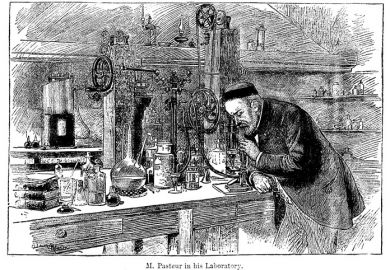In mid-April 2017, the Canadian government released a report on the state of federally supported fundamental science. Led by former University of Toronto president David Naylor, the august panel made 35 recommendations. The 250-page report is a worthy read for anyone interested in science policy, carefully delineating the role of fundamental science and identifying many of the problems with the way that it is currently supported, including fragmentation of funding vehicles and lack of coordination and national strategy.
It also carefully justifies a plan that, over four years, is designed to restore the capabilities of Canadian research via a net funding increase of C$1.3 billion (£760 million) a year after year 4, on top of the current spend of C$3.5 billion. This would restore the value of funding to its 2007 peak, and better recognise total costs of research.
Under the previous government, even when there were increases, these were earmarked for product-directed research. And little substantive impact was made by headline-baiting new funding vehicles such as the C$1.5 billion, 10-year Canada First Research Excellence Fund, aimed at funding “research areas that create long-term economic advantages for Canada”, and the C$7 million Canada Excellence Research Chairs programme, aimed at bringing future Nobelists to the country (although the latter did succeed in generating news when 25 of 26 chairs were awarded to men).
The excellence fund is largely administered through Canada’s primary science agencies, the so-called tricouncils (the Canadian Institutes of Health Research, the Natural Sciences and Engineering Research Council, and the Social Sciences and Humanities Research Council). However, their budgets for unrestricted grants have been run down. The new government’s first budget in 2016 went some way to redressing that situation and also commissioned what was to become the Naylor panel. But then the ball was dropped. The release of the report was put off until after the 2017 budget, which provided no new tricouncil funds. And when it was released, the government was rather quiet about it.
The scientific community, though, was anything but. Several grassroots “responses” were organised and from these emerged coordinated calls on the government to “support the report”. Still, official reaction remained guarded. In a public message of support to one of the researcher meetings, Kirsty Duncan, the minister of science, sent a troubling signal, stating that her role was to “balance the needs of the research community with the needs of Canadians. My goal is to improve support for scientists, but not at the cost of supporting some of Canada’s most vulnerable people and communities.” This response galvanised researchers, who saw their science not so much as a cost as an essential means to answer the current and future needs of Canadian society.
Trainees self-organised, tweeting photographs of themselves holding signs bearing the hashtag #Students4theReport – capturing the diverse and enthusiastic faces of the future of Canadian science in a way that any PR agency would die for. They also collected real-life examples of how the Naylor recommendations would help them realise their own and Canada’s potential. Apolitical researchers engaged local politicians, introducing them to what real science is about – as opposed to photo ops in front of expensive instrumentation with flashing lights. Given scientists’ natural scepticism and diversity of opinion, their unanimity of voice around the need for consolidation and rejuvenation of unfettered funding was remarkable.
These efforts appear to have paid off. Canada’s finance minister, Bill Morneau, went on record in December that his 2018 budget, due in March, will be about “improving the economic success of women, finding ways for science to help the economy over the long haul and preparing workers for the rapidly changing job market”.
But scientists’ unity of voice is in danger of being diluted, or worse. Sensing money on the table, special interest groups are now lobbying hard for their slice of pie. They mean well, but special pleading enables governments to play favourites and invest less.
The thrust of the grassroots campaign remains as true as ever: science thrives on a broad, competitive base. Researchers everywhere should throw their special interests overboard and recognise that all boats are raised when the funding tide is allowed to come in unrestricted.
Jim Woodgett is director of research at the Lunenfeld-Tanenbaum Research Institute, Toronto.
Register to continue
Why register?
- Registration is free and only takes a moment
- Once registered, you can read 3 articles a month
- Sign up for our newsletter
Subscribe
Or subscribe for unlimited access to:
- Unlimited access to news, views, insights & reviews
- Digital editions
- Digital access to THE’s university and college rankings analysis
Already registered or a current subscriber?






